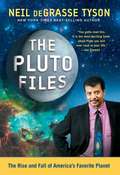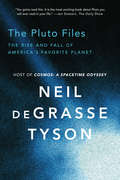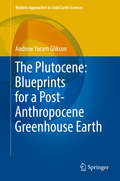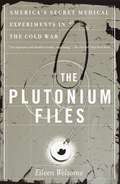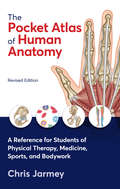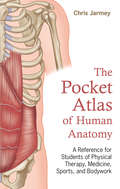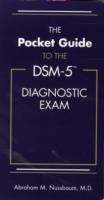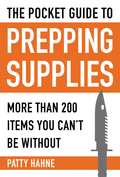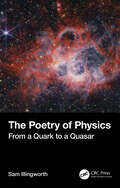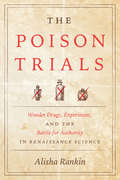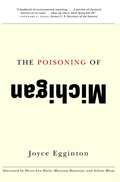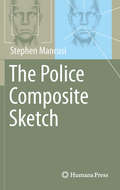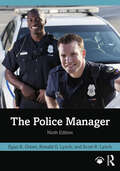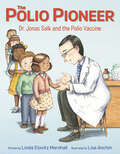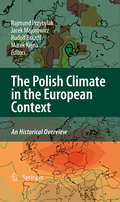- Table View
- List View
The Plough that Broke the Steppes: Agriculture and Environment on Russia's Grasslands, 1700-1914
by David MoonThis is the first environmental history of Russia's steppes. From the early-eighteenth century, settlers moved to the semi-arid but fertile grasslands from wetter, forested regions in central and northern Russia and Ukraine, and from central Europe. By the late-nineteenth century, they had turned the steppes into the bread basket of the Russian Empire and parts of Europe. But there was another side to this story. The steppe region was hit by recurring droughts, winds from the east whipped up dust storms, the fertile black earth suffered severe erosion, crops failed, and in the worst years there was famine. David Moon analyses how naturalists and scientists came to understand the steppe environment, including the origins of the fertile black earth. He also analyses how scientists tried to understand environmental change, including climate change. Farmers, and the scientists who advised them, tried different ways to deal with the recurring droughts: planting trees, irrigation, and cultivating the soil. More sustainable, however, were techniques of cultivation to retain scarce moisture in the soil. Among the pioneers were Mennonite settlers. Such approaches aimed to work with the environment, rather than trying to change it by planting trees or supplying more water artificially. The story is similar to the Dust Bowl on the Great Plains of the USA, which share a similar environment and environmental history. David Moon places the story of the steppes in the wider context of the environmental history of European colonialism around the globe.
The Pluto Files: The Rise and Fall of America's Favorite Planet
by Neil Degrasse TysonWhen the Rose Center for Earth and Space at the American Museum of Natural History reclassified Pluto as an icy comet, the New York Times proclaimed on page one, "Pluto Not a Planet? Only in New York. " Immediately, the public, professionals, and press were choosing sides over Pluto's planethood. Pluto is entrenched in our cultural and emotional view of the cosmos, and Neil deGrasse Tyson, director of the Rose Center, is on a quest to discover why. He stood at the heart of the controversy over Pluto's demotion, and, consequently, plutophiles have freely shared their opinions with him, including endless hate mail from third-graders.
The Pluto Files: The Rise and Fall of America’s Favorite Planet
by Neil Degrasse TysonThe New York Times bestseller: "You gotta read this. It is the most exciting book about Pluto you will ever read in your life." --Jon Stewart When the Rose Center for Earth and Space at the American Museum of Natural History reclassified Pluto as an icy comet, the New York Times proclaimed on page one, "Pluto Not a Planet? Only in New York." Immediately, the public, professionals, and press were choosing sides over Pluto's planethood. Pluto is entrenched in our cultural and emotional view of the cosmos, and Neil deGrasse Tyson, award-winning author and director of the Rose Center, is on a quest to discover why. He stood at the heart of the controversy over Pluto's demotion, and consequently Plutophiles have freely shared their opinions with him, including endless hate mail from third-graders. With his inimitable wit, Tyson delivers a minihistory of planets, describes the oversized characters of the people who study them, and recounts how America's favorite planet was ousted from the cosmic hub.
The Plutocene: Blueprints for a Post-Anthropocene Greenhouse Earth
by Andrew Yoram GliksonThis book presents projections and blueprints of the future geologic period, climate and biosphere, based on our current understanding of the Earth’s history and recent developments in the atmosphere-ocean-cryosphere system. By the second decade of the 21st century it has become clear that, rather than channel its efforts into protecting its planetary biosphere and living species, Homo sapiens continues to sink its remaining resources into weapons, including nuclear missiles – thus increasing the risk of intentional or accidental spread of radioactive nuclides on land, oceans and atmosphere. With time, possibility becomes probability, and probability becomes certainty ‒ heralding a transition from the Anthropocene to a new geological period, named here as Plutocene after the element Plutonium. During the Plutocene the biosphere is dominated by elevated temperatures, analogous to the Pliocene (2.6 – 5.3 Ma ago) or the Miocene (5.3 - 23 Ma ago) when mean global temperatures were 2 to 4 degrees Celsius warmer and sea levels 20 to 40 meters higher than pre-industrial levels. High levels of radioactivity will persist for at least 20,000 years and acid oceans will severely limit biological activity to the hardiest species. Atmospheric CO2 higher than 500 ppm with residence time on the order of thousands of years will delay the subsequent glacial cycle. These factors restrict comparisons of the Plutocene with biosphere conditions during the Miocene and Pliocene periods, partly because the flora and fauna evolved more gradually during these periods, unlike the abrupt climate shift of state during the second half of the 20th century and first part of the 21st century. Following a long lull in biological activity dominated by radiation-resistant organisms, especially Arthropods, a resumption of glacial cycles and decline in radioactivity will lead to the re-emergence of descendants of burrowing mammals and other genera. Depending on the intensity of radioactive pollution, hunter-gatherer humans may survive in northern latitudes, relatively cold high-altitude mountain valleys and elevated volcanic islands. In some areas subsistence farming may be possible. A new cycle will commence.
The Plutonium Files: America's Secret Medical Experiments In The Cold War
by Eileen WelsomeWhen the vast wartime factories of the Manhattan Project began producing plutonium in quantities never before seen on earth, scientists working on the top-secret bomb-building program grew apprehensive. Fearful that plutonium might cause a cancer epidemic among workers and desperate to learn more about what it could do to the human body, the Manhattan Project's medical doctors embarked upon an experiment in which eighteen unsuspecting patients in hospital wards throughout the country were secretly injected with the cancer-causing substance. Most of these patients would go to their graves without ever knowing what had been done to them.Now, in The Plutonium Files, Pulitzer Prize-winning reporter Eileen Welsome reveals for the first time the breadth of the extraordinary fifty-year cover-up surrounding the plutonium injections, as well as the deceitful nature of thousands of other experiments conducted on American citizens in the postwar years. Welsome's remarkable investigation spans the 1930s to the 1990s and draws upon hundreds of newly declassified documents and other primary sources to disclose this shadowy chapter in American history. She gives a voice to such innocents as Helen Hutchison, a young woman who entered a prenatal clinic in Nashville for a routine checkup and was instead given a radioactive "cocktail" to drink; Gordon Shattuck, one of several boys at a state school for the developmentally disabled in Massachusetts who was fed radioactive oatmeal for breakfast; and Maude Jacobs, a Cincinnati woman suffering from cancer and subjected to an experimental radiation treatment designed to help military planners learn how to win a nuclear war. Welsome also tells the stories of the scientists themselves, many of whom learned the ways of secrecy on the Manhattan Project. Among them are Stafford Warren, a grand figure whose bravado masked a cunning intelligence; Joseph Hamilton, who felt he was immune to the dangers of radiation only to suffer later from a fatal leukemia; and physician Louis Hempelmann, one of the most enthusiastic supporters of the plan to inject humans with potentially carcinogenic doses of plutonium. Hidden discussions of fifty years past are reconstructed here, wherein trusted government officials debated the ethical and legal implications of the experiments, demolishing forever the argument that these studies took place in a less enlightened era. Powered by her groundbreaking reportage and singular narrative gifts, Eileen Welsome has created a work of profound humanity as well as major historical significance.From the Hardcover edition.
The Pocket Atlas of Human Anatomy, Revised Edition: A Reference for Students of Physical Therapy, Medicine, Sports, and Bodywork
by Chris JarmeyRevised and updated: a user-friendly illustrated guide to human anatomy, written for students and practitioners.This concise, pocket-sized guide is a full-color on-the-go reference for students and practitioners of anatomy, massage, physical therapy, chiropractics, medicine, nursing, and physiotherapy. This second edition is more comprehensive, and now includes the skin, and the cardiovascular system, and more. Chapters 1 through 7 explain anatomical orientation, tissues, bones, the axial and appendicular skeletons, joints, and skeletal muscles and fascia. Subsequent chapters detail the four major muscle groups with composite illustrations of each region&’s deep and superficial muscles in both anterior and posterior views. Color tables show each muscle&’s origin, insertion, innervation, and action. A final chapter by Thomas W. Myers outlines myofascial meridians, presenting a map of fascial tracks and illustrating how they wind longitudinally through series of muscles. This new approach to structural patterning has far-reaching implications for effective movement training and manual therapy treatment. Three appendices illustrate cutaneous nerve supply and dermatomes (Appendix 1), the major skeletal muscles (Appendix 2), including detailed charts of the main muscles involved in movement, and the remaining body systems (Appendix 3). &“Impressive artwork throughout—far better than many of the current textbooks.&”—Dr. Robert Whitaker, MA MD MChir FRCS FMAA, Anatomist, University of Cambridge, author of Instant Anatomy, Fifth Edition and A Visual Guide to Clinical Anatomy (Wiley-Blackwell)
The Pocket Atlas of Human Anatomy: A Reference for Students of Physical Therapy, Medicine, Sports, and Bodywork
by Chris JarmeyA user-friendly guide for students of anatomy and anyone interested in the workings of the human bodyThis concise, pocket-sized reference guide is a handy, comprehensive reference for students and practitioners of anatomy, massage, physical therapy, chiropractics, medicine, and physiotherapy--or for anyone who would like a quick and well-organized manual of human anatomy. The first seven chapters explain anatomical orientation, tissues, bone, the axial and appendicular skeletons, joints, and skeletal muscle and fascia. In the book's final chapters, the muscle groups of the body's four major regions are amply illustrated, with composite drawings detailing each region's deep and superficial muscles in both anterior and posterior views. Color tables show each muscle's origin, insertion, innervation, and action. Written in clear, accessible prose, the book offers a wealth of knowledge to the lay reader, the aficionado, or the practitioner.
The Pocket Guide To The DSM-5 Diagnostic Exam
by Abraham M. NussbaumDesigned for interviewers at all levels of experience, The Pocket Guide to the DSM-5 Diagnostic Exam is the clinicians companion for using DSM-5Tin diagnostic interviews. Beginning with an introduction to the diagnostic interview, the Pocket Guide addresses the goals of the interview, provides an efficient structure for learning how to conduct one, reviews the screening questions, and then tackles the ways in which DSM-5, with its updated approaches to diagnosis and classification, impacts the interview going forward. Significant revisions from DSM-IV-TRr to DSM-5 are reviewed. The final chapter, the core of the guide, walks the reader through a complete diagnostic exam that includes the follow-up questions for each of the DSM-5 disorder classes. The book is useful for beginners learning the format and flow of the diagnostic interview and for seasoned clinicians conducting an interview consistent with the significant revisions reflected in DSM-5. Not intended to replace DSM-5 itself or psychiatric interview texts, The Pocket Guide to the DSM-5 Diagnostic Exam is a pragmatic and concise resource for diagnosing a person in mental distress while establishing a therapeutic relationship.
The Pocket Guide to Prepping Supplies: More Than 200 Items You Can?t Be Without
by Patty HahneYou will need more than just food and water when the grid goes down.Many people know what they need to survive a doomsday scenario. They stock high-calorie foods and clean water, they find their own sources of power and heat, and they prepare to defend themselves, if need be. With all they have stored, they have the ability to survive for days, even months at a time.You may think you have finished preparing once you have accumulated these basic necessities, but there is always more that can be done. In The Pocket Guide to Prepping Supplies, Patty Hahne offers up two hundred and thirty-five oft-forgotten items that may prove to be indispensable for surviving the apocalypse-should it happen. From the mundane, like quality shelving and needle and thread, to more specialized tools, such as a closet auger and jumper cables, Hahne describes how each one can prove to be a vital addition to the prepper’s cache. You may be surprised to see what common household items can do when used creatively, and Hahne is here to help inspire you.Presented in a compact design, The Pocket Guide to Prepping Supplies is an important addition to any prepper’s book collection, one that can be carried in a purse or pocket, stored in the car, or slipped into that carefully prepared bug-out bag.
The Poetic Species
by Edward O. Wilson Robert Hass Lee Briccetti"Wilson brilliantly analyzes the force, at once creative and destructive, of our biological inheritance and daringly advances a grand theory of the origins of human culture." -STEPHEN GREENBLATT, author of The Swerve on Edward O. Wilson's The Social Conquest of Earth"Hass [is] a philosophically attentive observer, deep thinker, and writer who dazzles and rousts." -Booklist on Robert Hass' What Light Can DoIn this shimmering conversation (the outgrowth of an event co-sponsored by the American Museum of Natural History and Poets House), Edward O. Wilson, renowned scientist and proponent of "consilience" or the unity of knowledge, finds an ardent interlocutor in Robert Hass, whose credo as U.S. poet laureate was "imagination makes communities." As they explore the many ways that poetry and science enhance each other, they travel from anthills to ancient Egypt and to the heights and depths of human potential. A testament to how science and the arts can join forces to educate and inspire, it ends in a passionate plea for conservation of all the planet's species.Edward O. Wilson, a biologist, naturalist, and bestselling author, has received more than 100 awards from around the world, including the Pulitzer Prize. A professor emeritus at Harvard University, he lives in Lexington, Massachusetts.Robert Hass' poetry is rooted in the landscapes of his native northern California. He has been awarded the MacArthur "Genius" Fellowship, the National Book Critics Circle Award (twice), the Pulitzer Prize, and the National Book Award. He is a professor of English at University of California-Berkeley.
The Poetics of Natural History: From John Bartram To William James
by Christoph IrmscherEarly American naturalists assembled dazzling collections of native flora and fauna, from John Bartram’s botanical garden in Philadelphia and the artful display of animals in Charles Willson Peale’s museum to P. T. Barnum’s American Museum, infamously characterized by Henry James as “halls of humbug.” Yet physical collections were only one of the myriad ways that these naturalists captured, catalogued, and commemorated America’s rich biodiversity. They also turned to writing and art, from John Edward Holbrook’s forays into the fascinating world of herpetology to John James Audubon’s masterful portraits of American birds. In this groundbreaking, now classic book, Christoph Irmscher argues that early American natural historians developed a distinctly poetic sensibility that allowed them to imagine themselves as part of, and not apart from, their environment. He also demonstrates what happens to such inclusiveness in the hands of Harvard scientist-turned Amazonian explorer Louis Agassiz, whose racist pseudoscience appalled his student William James. This expanded, full-color edition of The Poetics of Natural History features a preface and art from award-winning artist Rosamond Purcell and invites the reader to be fully immersed in an era when the boundaries between literature, art, and science became fluid.
The Poetry of Physics: From a Quark to a Quasar
by Sam IllingworthThe Poetry of Physics explores the intersection of science and art, blending the intricate beauty of physics with the evocative power of poetry. This unique work takes readers on a journey through the physical world, from the delicate patterns of living organisms to the vast reaches of the cosmos.Structured in four sections – living physics, environmental physics, celestial physics, and a guide on writing your own poems – this book offers both scientific insights and poetic reflections, providing a richer understanding of both fields. The final section provides practical guidance on crafting your own physics-inspired poetry, encouraging active participation in this tradition of blending scientific and artistic inquiry.Ideal for those who appreciate both science and the arts, whether they are physicists, aspiring poets, or curious minds seeking to explore the world and our place within it.
The Poison Eaters: Fighting Danger And Fraud In Our Food And Drugs
by Gail JarrowFormaldehyde, borax, salicylic acid. Today, these chemicals are used in embalming fluids, cleaning supplies, and acne medications. But in 1900, they were routinely added to food that Americans ate from cans and jars.In 1900, products often weren't safe because unregulated, unethical companies added these and other chemicals to trick consumers into buying spoiled food or harmful medicines. Chemist Harvey Washington Wiley recognized these dangers and began a relentless thirty-year campaign to ensure that consumers could purchase safe food and drugs, eventually leading to the creation of the U.S. Food and Drug Administration, or FDA, a US governmental organization that now has a key role in addressing the COVID-19/Coronavirus pandemic gripping the world today. Acclaimed nonfiction and Sibert Honor winning author Gail Jarrow uncovers this intriguing history in her trademark style that makes the past enthrallingly relevant for today's young readers.Six starred reviews -- ★Booklist ★BCCB ★Kirkus Reviews ★Publishers Weekly ★School Library Connection ★Shelf AwarenessAn ALSC Notable Children's Book * A Washington Post Best Children's Book * NCTE Orbis Pictus Honor Book * A BCCB Blue Ribbon * A Kirkus Reviews Best Children's Book * A NSTA Outstanding Science Trade Book for Students K-12 * A Chicago Public Library Best Children's Book★ "Revolting and riveting in turns, Jarrow's masterfully crafted narrative will fundamentally alter how readers view their food.Though laced with toxins, this is anything but toxic." -- Kirkus Reviews, starred review
The Poison Garden
by Liz HuyckFlowers may look pretty, but some can be downright deadly! In England, you can explore the Poison Garden—a place where flowers are known for their beauty on the outside and poison on the inside! In this story, you'll be able to read about and see these flowers safely without interacting with them.
The Poison Trials: Wonder Drugs, Experiment, and the Battle for Authority in Renaissance Science (Synthesis)
by Alisha RankinIn 1524, Pope Clement VII gave two condemned criminals to his physician to test a promising new antidote. After each convict ate a marzipan cake poisoned with deadly aconite, one of them received the antidote, and lived—the other died in agony. In sixteenth-century Europe, this and more than a dozen other accounts of poison trials were committed to writing. Alisha Rankin tells their little-known story. At a time when poison was widely feared, the urgent need for effective cures provoked intense excitement about new drugs. As doctors created, performed, and evaluated poison trials, they devoted careful attention to method, wrote detailed experimental reports, and engaged with the problem of using human subjects for fatal tests. In reconstructing this history, Rankin reveals how the antidote trials generated extensive engagement with “experimental thinking” long before the great experimental boom of the seventeenth century and investigates how competition with lower-class healers spurred on this trend.The Poison Trials sheds welcome and timely light on the intertwined nature of medical innovations, professional rivalries, and political power.
The Poisoned Well: New Strategies For Groundwater Protection
by Sierra Club Legal Defense FundThe Poisoned Well offers vital strategies for citizens, community organizations, and public officials who want to fight the battle against pollutants.
The Poisoner's Handbook: Murder and the Birth of Forensic Medicine in Jazz Age New York
by Deborah BlumEqual parts true crime, twentieth-century history, and science thriller,The Poisoner's Handbookis "a vicious, page-turning story that reads more like Raymond Chandler than Madame Curie"(The New York Observer) A fascinating Jazz Age tale of chemistry and detection, poison and murder, The Poisoner's Handbook is a page-turning account of a forgotten era. <p><p> In early twentieth-century New York, poisons offered an easy path to the perfect crime. Science had no place in the Tammany Hall-controlled coroner's office, and corruption ran rampant. However, with the appointment of chief medical examiner Charles Norris in 1918, the poison game changed forever. Together with toxicologist Alexander Gettler, the duo set the justice system on fire with their trailblazing scientific detective work, triumphing over seemingly unbeatable odds to become the pioneers of forensic chemistry and the gatekeepers of justice.
The Poisoner's Handbook: Murder and the Birth of Forensic Medicine in Jazz Age New York
by Deborah BlumVideo From "The Chemist's War" (Slate Magazine), by Deborah Blum Pulitzer Prize-winning science writer Deborah Blum follows New York City's first forensic scientists to discover a fascinating Jazz Age story of chemistry and detection, poison and murder. Deborah Blum, writing with the high style and skill for suspense that is characteristic of the very best mystery fiction, shares the untold story of how poison rocked Jazz Age New York City. In The Poisoner's Handbook Blum draws from highly original research to track the fascinating, perilous days when a pair of forensic scientists began their trailblazing chemical detective work, fighting to end an era when untraceable poisons offered an easy path to the perfect crime. Drama unfolds case by case as the heroes of The Poisoner's Handbook—chief medical examiner Charles Norris and toxicologist Alexander Gettler—investigate a family mysteriously stricken bald, Barnum and Bailey's Famous Blue Man, factory workers with crumbling bones, a diner serving poisoned pies, and many others. Each case presents a deadly new puzzle and Norris and Gettler work with a creativity that rivals that of the most imaginative murderer, creating revolutionary experiments to tease out even the wiliest compounds from human tissue. Yet in the tricky game of toxins, even science can't always be trusted, as proven when one of Gettler's experiments erroneously sets free a suburban housewife later nicknamed "America's Lucretia Borgia" to continue her nefarious work. From the vantage of Norris and Gettler's laboratory in the infamous Bellevue Hospital it becomes clear that killers aren't the only toxic threat to New Yorkers. Modern life has created a kind of poison playground, and danger lurks around every corner. Automobiles choke the city streets with carbon monoxide; potent compounds, such as morphine, can be found on store shelves in products ranging from pesticides to cosmetics. Prohibition incites a chemist's war between bootleggers and government chemists while in Gotham's crowded speakeasies each round of cocktails becomes a game of Russian roulette. Norris and Gettler triumph over seemingly unbeatable odds to become the pioneers of forensic chemistry and the gatekeepers of justice during a remarkably deadly time. A beguiling concoction that is equal parts true crime, twentieth-century history, and science thriller, The Poisoner's Handbook is a page-turning account of a forgotten New York. .
The Poisoning of Michigan (Second Edition)
by Joyce EggintonThe highly toxic PBB poisoning of Michigan remains the most widespread chemical contamination known in U.S. history. The Poisoning of Michigan is an investigative journalist's account of the contamination of Michigan's dairy cattle with the highly toxic chemical PBB (polybrominated biphenyl) in 1973. A near relation of PCB, this now-banned substance, designed as a fire retardant, was mistaken for a nutritional supplement at a chemical plant. It ended up in cattle feed that was distributed to farms throughout the state. By the time the error was discovered, virtually all nine million residents of Michigan had been ingesting contaminated milk and meat for almost a year. <p><p>A new introduction by the author and an afterword by three distinguished environmental scientists explain how the legacy of Michigan's poisoning lives on—and how equally toxic substitutes for PBB still invade our homes and lives. This new edition of Egginton's environmental classic—first published in 1980 and long out of print—tells how the tragedy affected both the farm community and the wider populace, and how federal and state authorities failed to respond. "We were mired in a swamp of ignorance," one state official admitted.
The Poisson-Boltzmann Equation: An Introduction (SpringerBriefs in Physics)
by Ralf BlosseyThis brief book introduces the Poisson-Boltzmann equation in three chapters that build upon one another, offering a systematic entry to advanced students and researchers. Chapter one formulates the equation and develops the linearized version of Debye-Hückel theory as well as exact solutions to the nonlinear equation in simple geometries and generalizations to higher-order equations. Chapter two introduces the statistical physics approach to the Poisson-Boltzmann equation. It allows the treatment of fluctuation effects, treated in the loop expansion, and in a variational approach. First applications are treated in detail: the problem of the surface tension under the addition of salt, a classic problem discussed by Onsager and Samaras in the 1930s, which is developed in modern terms within the loop expansion, and the adsorption of a charged polymer on a like-charged surface within the variational approach. Chapter three finally discusses the extension of Poisson-Boltzmann theory to explicit solvent. This is done in two ways: on the phenomenological level of nonlocal electrostatics and with a statistical physics model that treats the solvent molecules as molecular dipoles. This model is then treated in the mean-field approximation and with the variational method introduced in Chapter two, rounding up the development of the mathematical approaches of Poisson-Boltzmann theory. After studying this book, a graduate student will be able to access the research literature on the Poisson-Boltzmann equation with a solid background.
The Polar Bear Scientists (Scientists In The Field)
by Peter Lourie Susan Ramer"In the world there are probably fewer than 30 people who spend all or most of their effort working with polar bears. A veteran polar bear biologist, and the man in charge of Alaskan polar bear research for the past thirty years, Dr. Steven Amstrup has worked full time on polar bears since he joined the Polar Bear Project in 1980. The Polar Bear Project conducts ongoing research on polar bear populations and habitats in the Southern Beaufort Sea in Barrow, Alaska. Now under the leadership of George Durner, the Project has collected four decades of detailed, valuable data about how polar bears are responding to sea ice changes in the Arctic. This information has helped raised awareness about polar bears and their plight, and the same data may one day help scientists make new decisions for polar bear survival. Amstrup and Durner now spend most of their time 725 miles south of Barrow, Alaska at the University of Alaska, Anchorage campus, conducting research and drawing conclusions based on the discoveries that their team makes. Those scientists include polar bear biologists Kristin Simac and Mike Lockhart, based at times out of the abandoned Navy Arctic Research Laboratory in Barrow. Every spring scientists like Kristin and Mike go out for six to eight weeks to capture bears on the Southern Beaufort Sea. By capture one means "tranquilize, take samples and measurements, tag, and release" -- The Polar Bear Scientists begins on the first day of capture season and follows Kristin, Mike, and their helicopter mechanic as they fly through the skies over Barrow, looking for polar bears, and finding more water and less ice than they've seen in the past. The process of capturing polar bears is an exciting and challenging one. The polar bears have to be properly tranquilized in a safe area -- so just because the team spots a polar bear, doesn't mean they automatically try to capture it. Tranquilizing a bear too close to water or thin ice might mean the polar bear could stumble in and drown. It's also a challenge to tranq a mom bear and her babies, but when the opportunity presents itself, the team does its best to get the job done. Once they are on the ground with a captured bear, the research begins. All sorts of information and measurements are taken, blood is drawn, tags are affixed. What does it all mean? Are the polar bears getting smaller and moving further to find food every year? Is there more water and less ice than there was before? What can be done?"--
The Police Composite Sketch
by Stephen MancusiThe police composite sketch, one of the most crucial investigative tools in law enforcement, is developed during a composite session--an intense display of communication and art in which the words of a witness are transformed into the features of a suspect. Despite the incredible technological leaps made in investigative work, the forensic science of composite sketching still relies on the basic elements of drawing skill, interpretive ability and the spoken word. The Police Composite Sketch is a comprehensive manual on how to conduct a complete composite session. Through an array of case studies, it details several disciplines that comprise this specialized forensic art, including composite sketching, image modification, age progression, facial comparison analysis, demonstrative evidence and postmortem/skull reconstruction. It also explores how to intuit insights that are often inadvertently revealed by witnesses, victims and perpetrators during the composite session. In addition, this book discusses other relevant topics, such as the three-stage drawing technique, witness and victim types, descriptive terminologies, managing composite sessions. Complete with numerous illustrations and drawing tips, this seminal work offers a general composite session philosophy and specific session strategies to both experienced and aspiring forensic artists as well as any lay reader intrigued by this fascinating skill.
The Police Manager
by Scott R. Lynch Ronald G. Lynch Egan K. GreenThe Police Manager provides a roadmap for the challenges that police administrators face in their day-to-day duties, including considerations for dealing with subordinate officers and for interacting with the public. Covering a wide range of topics, from fiscal management to use-of-force policies, this text prepares readers for the tasks that police managers are confronted with. Readers benefit by gaining a thorough understanding of the complexities involved in an occupation that creates demands from the public, from public officials, and from other police officers. The book delivers information on these issues, with chapters dedicated to leadership styles and planning for leadership loss, as well civil liability considerations. New material in this edition covers specific challenges for small and underexamined police agencies such as university police departments. The Police Manager is an ideal textbook for college students hoping to work in police administration in the future, and is useful for current police managers who know that their jobs require a constant influx of ideas for overcoming new challenges.
The Polio Pioneer: Dr. Jonas Salk and the Polio Vaccine
by Linda Elovitz MarshallA SYDNEY TAYLOR NOTABLE BOOK • Learn about the importance of vaccines and the scientific process through the fascinating life of world-renowned scientist Jonas Salk, whose pioneering discoveries changed the world forever.Dr. Jonas Salk is one of the most celebrated doctors and medical researchers of the 20th century. The child of immigrants who never learned to speak English, Jonas was struck by the devastation he saw when the soldiers returned from battle after WWII. Determined to help, he worked to become a doctor and eventually joined the team that created the influenza vaccine. But Jonas wanted to do more. As polio ravaged the United States--even the president was not immune!--Jonas decided to lead the fight against this terrible disease. In 1952, Dr. Jonas Salk invented the polio vaccine, which nearly eliminated polio from this country. For the rest of his life, Dr. Salk continued to do groundbreaking medical research at the Salk Institute, leaving behind a legacy that continues to make the world a better place every day.This compelling picture book biography sheds light on Dr. Salk's groundbreaking journey and the importance of vaccination.
The Polish Climate in the European Context: An Historical Overview
by Rajmund Przybylak Jacek Majorowicz Marek Kejan Rudolf BrázdilReconstruction of the climate variability of the past 500 years is a topic of great scientific interest not only in global terms, but also at regional and local levels. This period is interesting on account of the increasing influence of anthropogenic forcing and its overlap with natural factors. The Polish Climate in the European Context: An Historical Overview summarises the results of research into climate variability based on a combination of instrumental, documentary, dendrochronological and borehole data from Poland. The first part of the book provides a Central European perspective of research in these fields, which forms the general background for a presentation of the state of the art of climatic change studies in Poland during the past 500 years (Part 2). This is followed by a selection of papers dealing mainly with different aspects of climate variability in Poland and Central Europe (Part 3). "This book is a valuable tool integrating Polish, Central and Eastern European climate research into the global context. It is, as such, a must for climate researchers worldwide." (Gaston Demarée, Royal Meteorological Institute of Belgium) "This volume marks a significant step forward in our understanding of European climatic history." (Christian Pfister, University of Bern)

